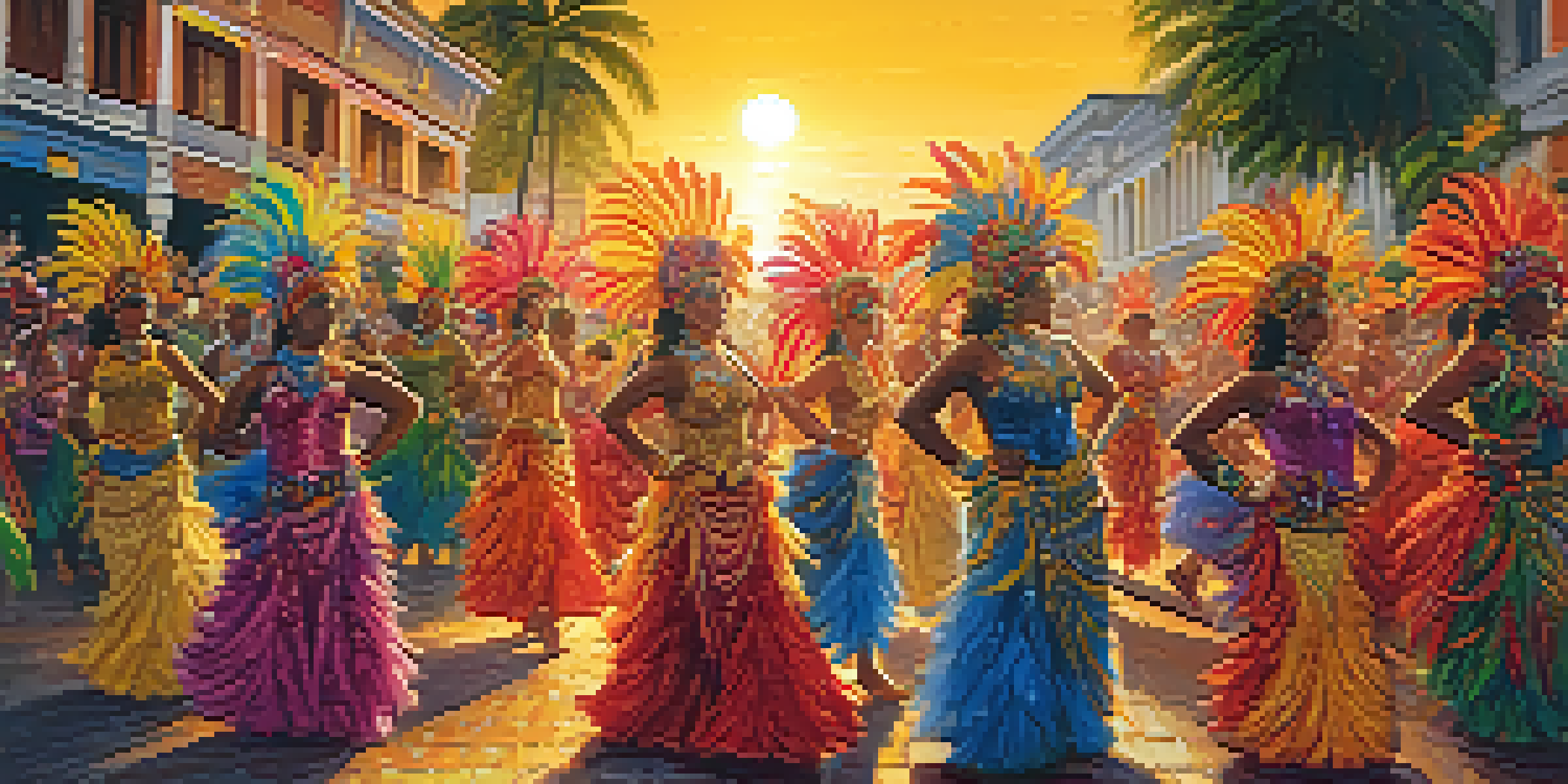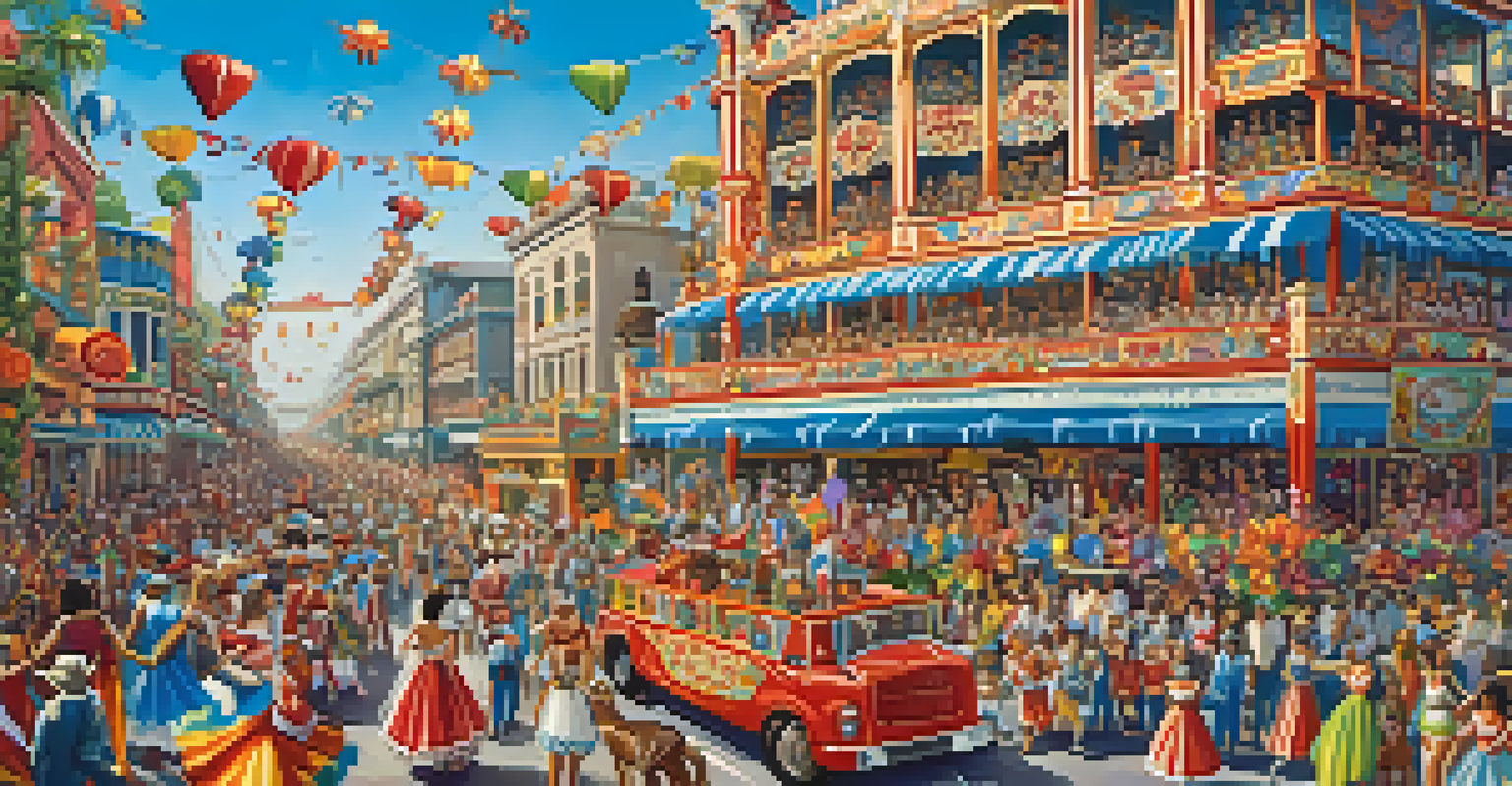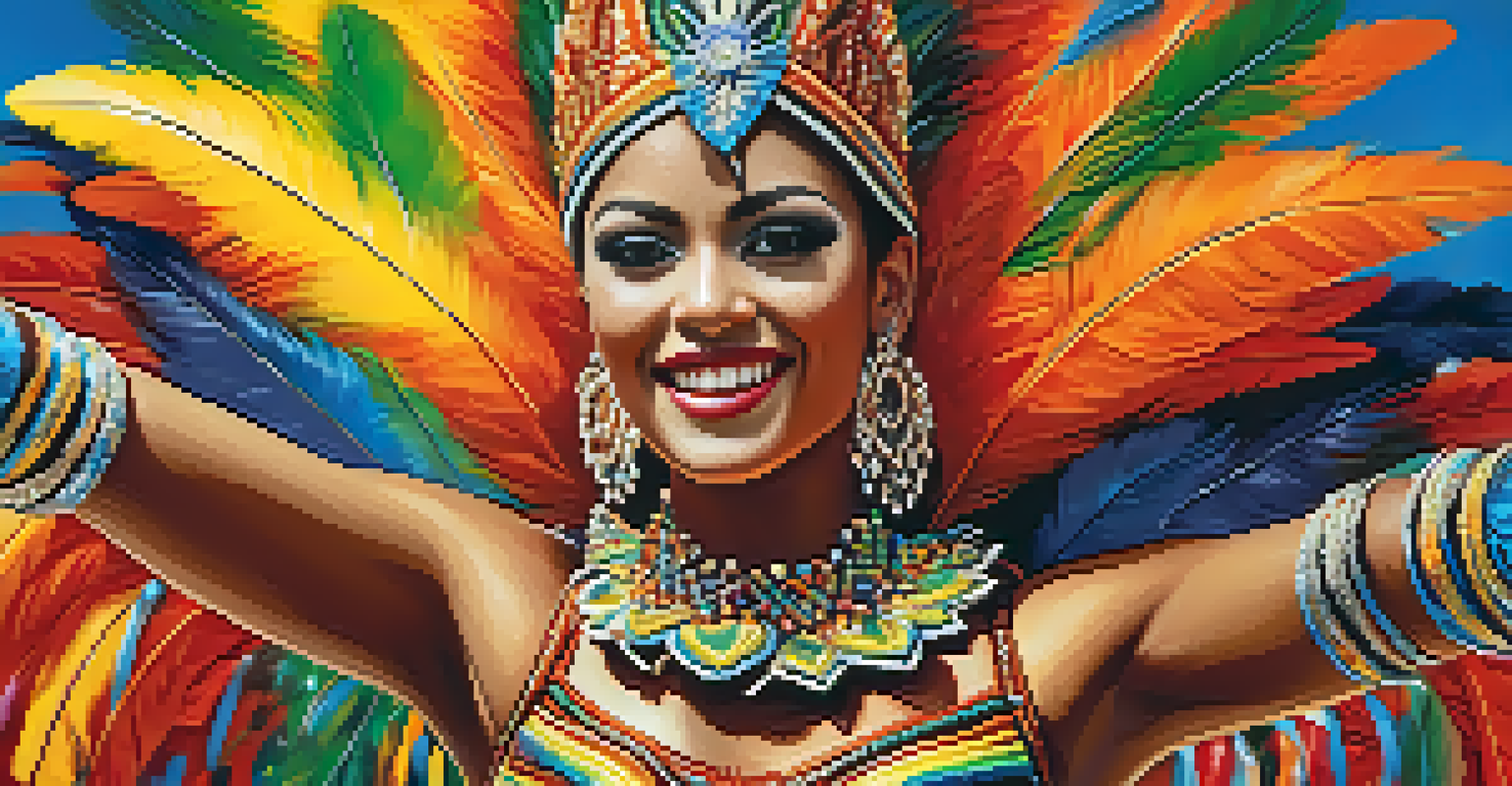Brazilian Carnival: A Celebration of Music, Dance, and Sports

The Origins of Brazilian Carnival: A Cultural Mosaic
Brazilian Carnival has deep roots that intertwine different cultures. It began in the 18th century, influenced by Portuguese festivities, African rhythms, and Indigenous traditions. This vibrant celebration showcases Brazil's rich cultural diversity, making it a unique experience for all who partake.
Carnival is the time when we can celebrate our freedom and be who we truly are.
As Carnival evolved, it absorbed elements from various regions, including samba from the favelas and frevo from Pernambuco. Each style adds its own flair, creating a dynamic atmosphere filled with rhythm and joy. This cultural mosaic is not just a feast for the eyes; it's a reflection of Brazil's complex history.
Today, Carnival retains its traditional elements while also embracing modern influences. The fusion of past and present is evident in the elaborate parades and energetic street parties, where everyone is invited to join in the celebration.
Music: The Heartbeat of Carnival Celebrations
Music is undeniably central to the Carnival experience, setting the tone for the festivities. The infectious beats of samba fill the air, drawing people from all walks of life to the streets. This genre, originating from Afro-Brazilian communities, encapsulates the spirit of Carnival and invites everyone to dance.

In addition to samba, other musical styles like axé and frevo also play a significant role in the celebrations. Each genre brings its own unique energy, ensuring that the party never stops. From live bands to DJs, the soundscape of Carnival is as diverse as its participants.
Carnival's Cultural Richness
Brazilian Carnival is a vibrant celebration that showcases the country's diverse cultural heritage, blending influences from Portuguese, African, and Indigenous traditions.
The connection between music and movement is palpable during Carnival, as dancers respond instinctively to the rhythms. This synergy creates an electric atmosphere where joy and celebration reign, allowing people to forget their worries and fully immerse themselves in the moment.
Dance: A Celebration of Expression and Community
Dance is a vital component of Carnival, serving as a powerful form of expression. Whether it's samba, frevo, or maracatu, each dance style conveys a story and embodies the spirit of the culture. Participants often spend months preparing their routines, showcasing their skills and creativity to the world.
Music is the soundtrack of our lives, and during Carnival, it becomes the heartbeat of the celebration.
The parades feature dazzling costumes and choreographed performances that are nothing short of spectacular. Each samba school competes to tell a story through their dance, creating a visual feast for spectators. This sense of competition fosters community spirit, as schools come together to celebrate and support one another.
Moreover, dance during Carnival is inclusive, inviting everyone to participate regardless of skill level. From seasoned dancers to first-timers, the joy of movement unites people, breaking down barriers and creating lasting connections among participants.
Sports and Carnival: A Unique Celebration of Athleticism
While Carnival is primarily known for its music and dance, sports also play an intriguing role in the festivities. Events like street soccer tournaments showcase the athleticism and passion of Brazilian culture. These competitions often draw large crowds, blending the excitement of sports with the vibrant energy of Carnival.
Participants showcase their skills in friendly matches, encouraging community engagement and camaraderie. The spirit of competition fosters a sense of unity, as everyone rallies behind their favorite teams. This blend of sport and celebration creates an exhilarating atmosphere, where cheers and laughter echo through the streets.
Music and Dance Unite Everyone
Music, especially samba, is the heartbeat of Carnival, encouraging participation and creating an electric atmosphere where joy and movement thrive.
Additionally, some Carnival events feature traditional games and activities that highlight Brazil’s diverse sports culture. From capoeira demonstrations to beach volleyball, these activities add another layer of excitement to the Carnival experience and emphasize the importance of physical activity.
The Role of Samba Schools: Heart and Soul of the Carnival
Samba schools are the backbone of Carnival, acting as cultural institutions that preserve the tradition of samba. Each school is a community in itself, bringing together artists, musicians, and dancers to collaborate on creative projects. They play a significant role in organizing the parades and competitions that define the Carnival experience.
Throughout the year, samba schools work tirelessly to prepare elaborate floats and costumes to showcase during the parades. The dedication and passion displayed by their members are evident in every detail, from the choreography to the intricate designs. This commitment transforms each parade into a stunning spectacle that captivates audiences.
Moreover, samba schools serve as a platform for social mobility, providing opportunities for members from underserved communities. By nurturing talent and fostering creativity, these schools empower individuals and strengthen the cultural fabric of Brazil, ensuring the legacy of Carnival lives on.
Costumes: A Dazzling Display of Creativity and Artistry
Costumes are a quintessential part of the Carnival experience, showcasing the creativity and artistry of Brazilian culture. Elaborate designs, vibrant colors, and intricate details come together to create stunning ensembles that dazzle spectators. Each costume tells a story, reflecting the themes and messages of the samba schools.
The craftsmanship involved in creating these costumes is nothing short of remarkable. Artisans spend countless hours handcrafting garments adorned with sequins, feathers, and beads, ensuring that every piece is a work of art. This attention to detail enhances the overall spectacle of the parades, making them unforgettable experiences.
Samba Schools: Community Pillars
Samba schools are vital to Carnival, fostering creativity and social mobility while preparing elaborate parades that captivate audiences and celebrate Brazilian culture.
Furthermore, costumes symbolize the freedom of self-expression during Carnival. Participants often embrace their individuality, donning outfits that reflect their personalities. This celebration of diversity fosters a sense of belonging, as people come together to appreciate the creativity that flourishes during this lively festival.
The Global Influence of Brazilian Carnival: Spreading Joy Worldwide
Brazilian Carnival has transcended borders, inspiring celebrations around the world. Cities like New Orleans and Venice have adopted elements of the festival, incorporating samba rhythms and vibrant costumes into their own traditions. This global influence underscores the universal appeal of Carnival's spirit of joy and celebration.
Many countries now host their own versions of Carnival, creating unique adaptations that reflect local cultures. These events foster cultural exchange and promote understanding, allowing people to experience the magic of Carnival without traveling to Brazil. The shared joy of music, dance, and community unites people across the globe.

As Carnival continues to evolve, its essence remains the same: a celebration of life, culture, and community. This vibrant festival serves as a reminder of the power of art and expression, encouraging everyone to join in the celebration, no matter where they are.